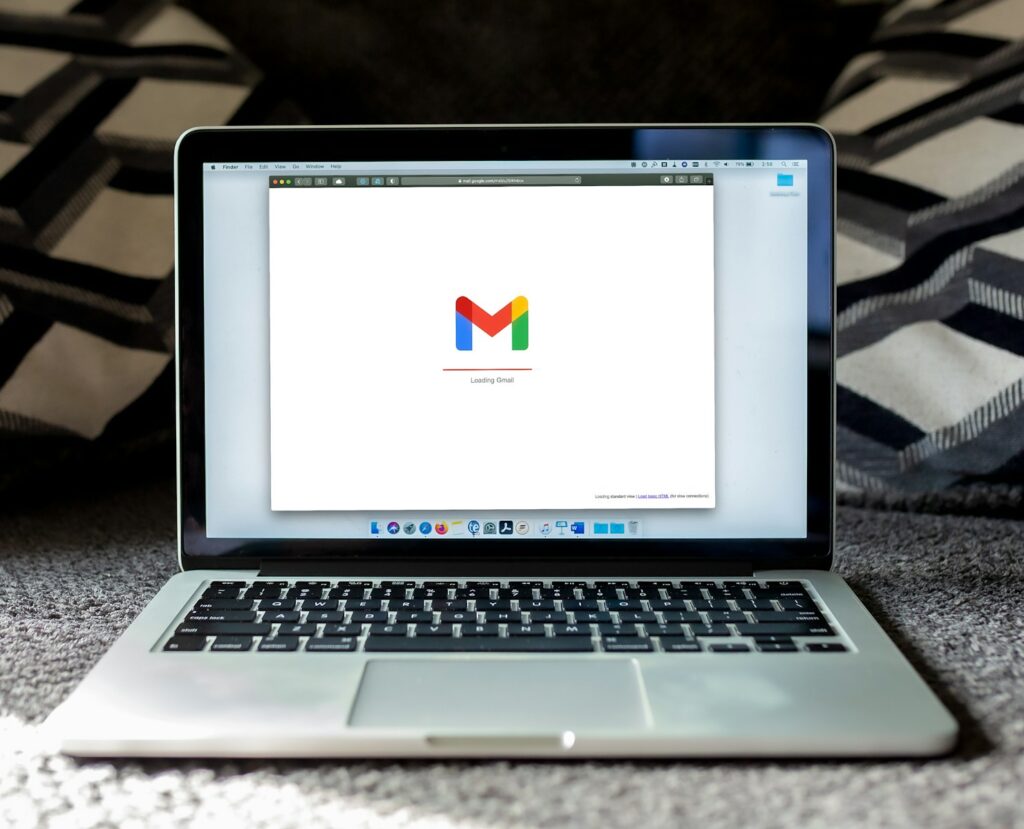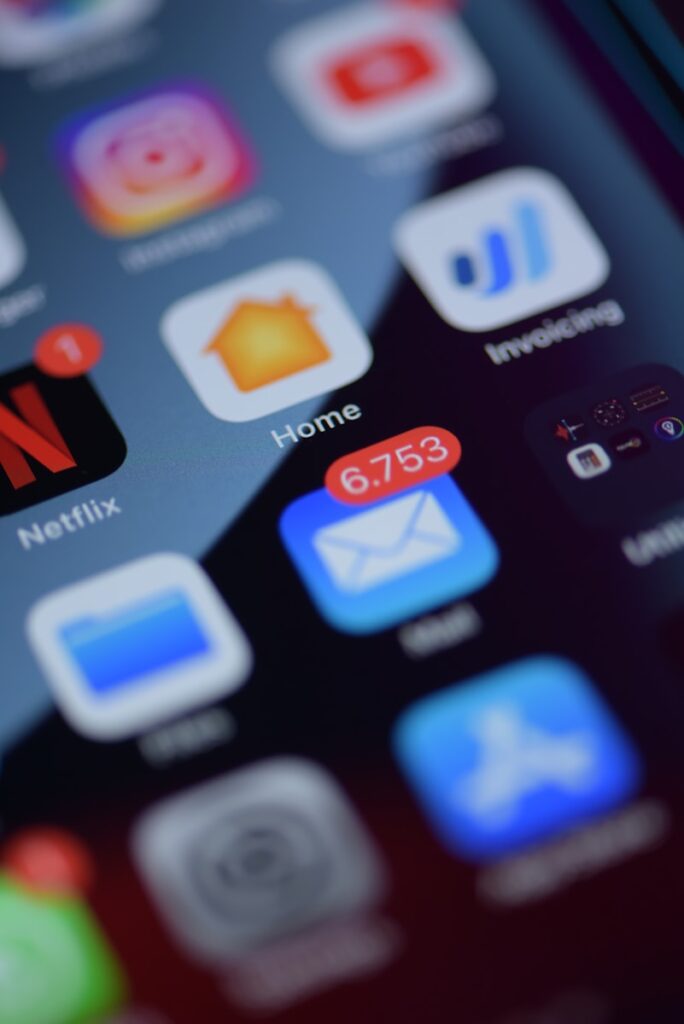
In late 2014, the entertainment industry was rocked by an unprecedented cyberattack on Sony Pictures Entertainment (SPE), a breach that transcended mere data theft to expose the intricate, often tumultuous, inner workings of a major Hollywood studio. This event, attributed to a shadowy group calling themselves “Guardians of Peace,” swiftly escalated beyond a security incident, evolving into a multifaceted crisis that laid bare confidential communications, executive decisions, and deeply personal information. The hack served as a stark reminder of the digital vulnerabilities facing corporations and the profound ripple effects such a compromise can unleash across an entire sector.
The repercussions of the Sony hack were immediate and far-reaching, fundamentally challenging established norms of corporate governance, cybersecurity protocols, and even international relations. It was not merely a loss of data; it was a public unveiling of the strategic discussions, the personnel dynamics, and the ethical dilemmas that often remain hidden behind the polished facade of blockbuster productions. The subsequent investigations and analyses painted a comprehensive picture of the human, technical, and procedural factors that converged to create one of the most significant corporate breaches in recent memory.
This article delves into the critical revelations stemming from the Sony Pictures email leak, meticulously dissecting its origins, the shocking demands made by the perpetrators, and the initial wave of disclosures concerning internal strife and misconduct. Through an authoritative lens, we examine the technical vulnerabilities exploited, the geopolitical complexities involved, and the early impacts on Sony’s operations and personnel. Our exploration begins at the very heart of the breach, unraveling how a sophisticated cyberattack came to define a pivotal moment in the studio’s history.

1. **The Anatomy of the Cyberattack: “Guardians of Peace” and Destructive Malware**The cyberattack on Sony Pictures Entertainment came to public light on November 24, 2014, when a group identifying themselves as “Guardians of Peace” (GOP) launched a destructive malware assault. This sophisticated operation rendered many Sony employees’ computers inoperable, simultaneously unveiling a portion of the confidential data that had been siphoned from the company’s servers. The attack was not a simple smash-and-grab; it was a meticulously planned operation with clear objectives to infiltrate, extract, and disrupt.
The technical underpinnings of the attack were particularly alarming, characterized by the deployment of a variant of the Shamoon wiper malware. United States Computer Emergency Readiness Team (US-CERT) advisories, though not naming Sony directly, described how attackers utilized a Server Message Block (SMB) Worm Tool. This tool incorporated a suite of malicious components, including a listening implant, a backdoor for persistent access, a proxy tool to mask origins, a destructive hard drive tool, and a destructive target cleaning tool designed to erase evidence of the intrusion.
These components collectively suggested a deliberate intent: to gain repeated unauthorized entry, extract vast quantities of sensitive information, and ultimately cause significant destruction to Sony’s digital infrastructure. The attack highlighted how sophisticated adversaries could leverage both technical vulnerabilities and an array of tools to compromise critical systems. It served as a potent example of how weak authentication controls, unencrypted archives, outdated firewall configurations, and missing security patches created persistent openings that attackers deftly exploited.
While the exact duration of the hack remains unknown, U.S. investigators concluded that the culprits spent at least two months copying critical files from Sony’s networks. However, a purported member of the GOP claimed even longer access, stating they had been within Sony’s systems for at least a year prior to the attack’s discovery. The hackers also asserted they had exfiltrated over 100 terabytes of data, a claim that has never been definitively confirmed but underscores the sheer scale of the potential compromise.

2. **The Unprecedented Demands: “The Interview” and North Korean Threats**The Sony Pictures hack took a dramatically unprecedented turn when the “Guardians of Peace” explicitly linked their actions to a specific film: the then-upcoming political satire, “The Interview.” This film, produced and directed by Seth Rogen and Evan Goldberg, starred Rogen and James Franco as journalists recruited by the CIA to assassinate North Korean leader Kim Jong Un during a scheduled interview. The hackers demanded that Sony withdraw the film, setting a direct confrontation between corporate freedom and cyber-coercion.
The threats intensified significantly on December 16, when the GOP mentioned “The Interview” by name, escalating their rhetoric to include terrorist actions. They explicitly warned against the film’s New York City premiere, scheduled for December 18, and its U.S.-wide release date of December 25. The chilling message evoked memories of a national tragedy, stating, “Remember the 11th of September 2001. We recommend you to keep yourself distant from the places at that time.”
This overt threat of violence caused widespread alarm across the entertainment industry and among national security agencies. Many major U.S. theatrical chains, including Carmike Cinemas, Regal Entertainment Group, and AMC Theatres, responded by opting not to screen “The Interview,” citing concerns for public safety. The unprecedented situation left Sony in a precarious position, balancing creative expression against credible threats.
In response to these grave warnings and the theater boycotts, Sony Pictures ultimately chose to cancel the film’s formal premiere and mainstream theatrical release. Instead, the studio opted for a groundbreaking strategy, releasing “The Interview” directly to digital platforms, followed by a limited theatrical release the following day. Seth Rogen and James Franco, the film’s stars, initially expressed uncertainty about the hack’s direct cause but subsequently canceled all media appearances related to the film outside of its planned New York City premiere, underlining the severity of the situation.

3. **Geopolitical Fallout: North Korea’s Denials and U.S. Intelligence Conclusions**Following a thorough investigation, United States intelligence officials officially concluded that the devastating cyberattack on Sony Pictures Entertainment was sponsored by the government of North Korea. This assessment was based on an extensive evaluation of the specific software, hacking techniques, and network sources utilized by the perpetrators, definitively linking the sophisticated intrusion to state-level involvement.
North Korea, however, vehemently denied all responsibility for the attack. Despite their public repudiations, North Korean officials had previously articulated strong objections to “The Interview” on the international stage. They had voiced concerns to the United Nations, asserting that “to allow the production and distribution of such a film on the assassination of an incumbent head of a sovereign state should be regarded as the most undisguised sponsoring of terrorism as well as an act of war.” This pre-existing diplomatic pressure underscored the deep ideological opposition to the film.
The U.S. government viewed the cyberattack as a brazen act of aggression, a sentiment powerfully articulated by U.S. Ambassador to the U.N. Samantha Power. She stated, “This is absurd. Yet it is exactly the kind of behavior we have come to expect from a regime that threatened to take ‘merciless countermeasures’ against the U.S. over a Hollywood comedy, and has no qualms about holding tens of thousands of people in harrowing gulags.” Her remarks highlighted the broader geopolitical context and the perception of North Korea’s provocative behavior.
The conclusion of North Korean state sponsorship dramatically elevated the incident from a corporate cybersecurity breach to an international matter. It underscored the emerging landscape of cyberwarfare, where state actors could leverage digital tools to exert political pressure and cause significant economic and reputational damage to foreign entities. The episode became a critical case study in the complex interplay between technology, entertainment, and global security.

4. **Immediate Crisis Response: Sony’s Scramble and Law Enforcement Involvement**Sony Pictures Entertainment became acutely aware of the extent of the hack on Monday, November 24, 2014, when the destructive malware rendered countless employee computers inoperable. This operational paralysis was accompanied by a clear warning from the “Guardians of Peace,” along with an initial tranche of the confidential data they had stolen. The company was immediately thrust into a high-stakes crisis management scenario, confronting both internal chaos and public exposure.
Prior to the widespread system failure, several Sony Pictures executives had received an ominous email on the preceding Friday, November 21, from a group calling themselves “God’sApstls” [sic]. This message demanded “monetary compensation,” threatening that if ignored, “Sony Pictures will be bombarded as a whole.” However, this initial warning was largely overlooked by executives, lost amid the high volume of correspondence or dismissed as spam, highlighting a critical lapse in early threat detection and response.
In the aftermath of the full-scale attack, Sony rapidly mobilized internal teams to confront the escalating crisis and mitigate the extensive loss of data flowing onto the internet. The studio promptly engaged external expertise, contacting the Federal Bureau of Investigation (FBI) to initiate a criminal investigation and bringing in the private security firm FireEye to assist. Their collective objectives were multifaceted: to protect employees whose personal data was exposed, to repair the severely damaged computer infrastructure, and to trace the source of the unprecedented leak.
In the days following the initial hack, the “Guardians of Peace” deliberately began leaking previously unreleased films and strategically releasing portions of the confidential data. This calculated move was designed to attract significant attention from social media platforms and the press, creating a viral distribution channel for the stolen information. This public spectacle further intensified the pressure on Sony, demanding an urgent and robust response to an evolving crisis that captured global headlines.

5. **Exposed Personal Data: The Grave Risk to Employees and Their Dependents**One of the most profound and unsettling consequences of the Sony Pictures hack was the exposure of vast amounts of personally identifiable information belonging to current and former employees and their dependents. A notice letter from SPE, dated December 8, 2014, confirmed that unauthorized individuals had obtained sensitive data, transforming a corporate breach into a deeply personal invasion for thousands of individuals. The scope of this personal data compromise was exceptionally broad.
The leaked information included critical identifiers such as names, home addresses, and Social Security numbers, alongside private financial and medical information. C-SPAN notably reported that an astounding 47,000 unique Social Security numbers had been stolen from the SPE computer network, creating a significant risk of identity theft and financial fraud for a large population of individuals connected to the studio. This type of exposure presented long-term vulnerabilities for those affected.
The failure to safeguard this sensitive personal information quickly led to legal repercussions for Sony. In December 2014, within weeks of the breach becoming public, former Sony Pictures Entertainment employees initiated four distinct lawsuits against the company. These legal actions alleged that Sony had failed in its fundamental responsibility to protect their data, highlighting the severe liabilities a corporation faces when such a catastrophic data breach occurs.
Indeed, data breaches of this magnitude carry substantial financial burdens beyond immediate recovery costs. Legal fees, potential regulatory fines, and the significant expenses associated with compensating affected individuals can be immense, often threatening an organization’s financial stability. The Sony hack underscored that robust data security measures are not just good practice, but a critical imperative for maintaining trust and avoiding devastating economic fallout.

6. **Unmasking Executive Abuse: Power Overrides and Undue Pressure**Beyond the technical failures, the leaked emails revealed a troubling portrait of internal corporate misconduct, specifically instances of executive abuse of power. The messages contained allegations spanning executive authority, workplace harassment, and financial malfeasance, painting a multifaceted image of systemic ethical lapses. This unprecedented transparency allowed the public to glimpse the often-unseen power dynamics at play within a major studio.
Executive misconduct became evident through email exchanges illustrating how senior leaders routinely overrode standard approval processes. These communications detailed instances where executives threatened department heads and even withheld credit for project contributions, showcasing a culture where top-level decisions could impose undue pressure on creative teams. Such actions fundamentally compromised both employee morale and the quality of production outcomes, directly impacting the studio’s ability to deliver on its content commitments.
One particularly revealing detail involved Sony CEO Kazuo Hirai, who, according to the leaked emails, pressured Sony Pictures co-chairwoman Amy Pascal to “soften” a controversial assassination scene in “The Interview.” This specific instruction highlighted the direct influence and potential interference exerted by senior leadership over creative content, demonstrating how corporate agendas could supersede artistic integrity or directorial vision in sensitive projects. The incident showcased a tangible example of how top-down pressure operated within the studio’s hierarchy.
These revelations of executive misconduct were not isolated incidents but rather formed a discernible pattern within the studio’s internal communications. They exposed how critical decisions were often made without proper oversight or consideration for standard protocols, potentially fostering an environment where accountability was diluted. The leaked emails thereby provided an invaluable, albeit involuntary, case study in the challenges of corporate governance within a high-pressure, creative industry.

7. **A Toxic Culture Revealed: Workplace Harassment and Bullying Allegations**The leaked emails also offered a disturbing glimpse into allegations of a toxic workplace culture, characterized by instances of harassment and bullying. Staff communications revealed patterns of belittlement, micro-aggressions, and the repeated isolation of certain employees, indicating a systemic issue that extended beyond individual grievances. This environment created significant challenges for fostering a respectful and inclusive professional setting.
Evidence of this pervasive toxicity surfaced through group threads where team leads utilized disparaging language. These exchanges directly triggered formal complaints, confirming the presence of a hostile atmosphere within various departments. Such behaviors are corrosive to organizational health, undermining trust and inhibiting collaboration among colleagues, which is particularly detrimental in a creative industry reliant on teamwork and open communication.
Further examples of derogatory remarks within senior leadership threads contributed to the perception of a problematic internal environment. Producer Scott Rudin, in an email exchange with Amy Pascal, referred to actress Angelina Jolie as “a minimally talented spoiled brat.” This comment, prompted by Jolie’s desire for David Fincher to direct her film “Cleopatra”—a move Rudin felt would interfere with Fincher’s involvement in a planned Steve Jobs biopic—underscored a broader pattern of dismissive and demeaning language at the highest echelons of the company.
Perhaps even more controversially, Amy Pascal and Scott Rudin engaged in an email exchange concerning Pascal’s upcoming encounter with President Barack Obama. This conversation included characterizations described as racist, with suggestions to mention films about African-Americans, such as “Django Unchained,” “12 Years a Slave,” and “The Butler,” when meeting the president. This exchange ultimately contributed to Pascal’s resignation from Sony, powerfully illustrating how deeply entrenched issues of insensitivity and prejudice could manifest, profoundly affecting both individuals and the studio’s reputation. Addressing such behaviors is paramount to rebuilding a respectful environment where talent can genuinely flourish.

8. **Celebrity Email Disclosures: Unmasking Hollywood’s Private Conversations**The public unraveling of Sony Pictures Entertainment’s internal communications inadvertently offered an unvarnished glimpse into the private world of Hollywood’s elite. Beyond strategic decisions, the leaked emails unveiled candid, often unflattering, exchanges involving some of the biggest names in entertainment. This unprecedented transparency showcased the intricate, sometimes tumultuous, relationships between studio executives and celebrated talent, reshaping public perception of the industry’s inner circle.
One notable thread involved actor Ryan Gosling and Sony co-chairman Amy Pascal, detailing Gosling’s apparent interest in various projects, including a male role in Paul Feig’s planned all-female “Ghostbusters” remake. Conversely, Leonardo DiCaprio became the subject of executive ire after pulling out of the “Steve Jobs” biopic, with producer Mark Gordon labeling his decision as “Horrible behavior,” echoed by Pascal as “Actually despicable.” These blunt assessments, never intended for public consumption, underscored the intense pressures and expectations that define the relationship between major studios and their marquee stars.
Further demonstrating casual executive disregard for prominent figures, Tom Rothman, head of TriStar, forwarded an interview with Willow and Jaden Smith to Amy Pascal with the note: “don’t let this family date your movies!!!” Perhaps one of the most sensitive personal disclosures surfaced a year later when the emails revealed Sony executives were aware of Charlie Sheen’s HIV diagnosis as early as March 2014, preceding his public announcement. This profound invasion of privacy highlighted the ethical questions surrounding deeply personal information within a corporate context and the severe human cost of compromised data.

9. **Broader Financial Irregularities and Corporate Malfeasance**Beyond individual executive misconduct, the Sony Pictures leak exposed systemic financial irregularities and corporate malfeasance. Internal memos detailed dubious financial practices, including off-the-books payments, budget padding, and selective reporting to investors. These disclosures unveiled a pattern of governance failures, hinting at deeper structural vulnerabilities within the studio’s fiscal operations and raising concerns about transparency.
The leaked documentation suggested a deliberate effort to circumvent standard financial oversight mechanisms, with production resources purportedly diverted through unapproved transfers and disguised fees. Such actions undermine fiscal transparency and betray the trust of stakeholders, including investors, who rely on accurate financial reporting. The revelations necessitated a thorough re-evaluation of the studio’s financial controls and accountability structures.
In the aftermath, Sony Pictures publicly acknowledged the ongoing damages by setting aside $15 million in its first-quarter financials for 2015. This underscored the tangible economic impact, encompassing cybersecurity remediation and anticipated legal expenses. The studio’s stock price also slipped by 8%, and several distribution deals stalled amid heightened reputational concerns, illustrating a direct correlation between perceived ethical lapses and significant business setbacks.

10. **Legal Battlegrounds: Lawsuits and Regulatory Scrutiny**The fallout from the Sony Pictures hack quickly escalated into a complex web of legal challenges and regulatory inquiries, fundamentally altering Sony’s legal landscape. The breach triggered a cascade of lawsuits and governmental investigations, placing its data protection compliance under intense scrutiny and highlighting the severe liabilities a corporation faces from catastrophic data exposure.
Subsequent lawsuits alleged a range of infractions beyond initial employee data concerns, including breach of privacy, defamation, and securities violations. These civil claims targeted both the studio and individual executives for exposing personal information without consent, underscoring the multifaceted nature of the breach’s impact. Simultaneously, regulatory agencies launched inquiries into Sony’s data-protection compliance, assessing whether the studio met standards for safeguarding sensitive information.
The incident also prompted a significant legal dispute when WikiLeaks republished over 30,000 documents from the hack. Sony vigorously condemned the action, arguing WikiLeaks “indiscriminately” disseminated stolen data, which “rewards a totalitarian regime seeking to silence dissident speech.” This legal challenge highlighted complex ethical and legal questions surrounding data breaches, freedom of information, and corporate ownership of sensitive communications, ultimately imposing substantial financial and operational burdens on the studio.

11. **The Ripple Effect on Industry: Governance and Ethics Reforms**The unprecedented scale of the Sony Pictures hack sent shockwaves throughout the entertainment industry, prompting a collective re-evaluation of corporate governance, cybersecurity protocols, and ethical standards. Serving as a stark warning, the breach compelled other major studios and industry associations to revisit their own frameworks, catalyzing a broader movement toward enhanced audit protocols and reinforced board-level oversight across the sector.
Industry associations, recognizing systemic vulnerabilities, began recommending mandatory ethics training and periodic cybersecurity drills for members. These proactive measures were designed to cultivate a more resilient and ethically conscious corporate environment. The goal was to instill a culture of vigilance, ensuring employees understood their role in maintaining security and upholding ethical conduct, thereby strengthening the industry’s overall accountability and safeguarding creative assets.
The leaked emails, revealing executive abuse and misconduct, spurred deeper examination of leadership accountability within creative industries. This highlighted the critical need for clearer lines of authority and more stringent checks and balances to prevent unilateral decision-making and undue pressure. The drive for greater transparency in operational frameworks became a crucial element in rebuilding trust, ensuring ethical considerations were integrated into every stage of content production and business operations.

12. **Sony’s Strategic Response: Fortifying Cybersecurity Defenses**In response to the devastating cyberattack, Sony Pictures Entertainment launched a comprehensive crisis-management plan, aggressively overhauling its cybersecurity infrastructure. Recognizing the critical weaknesses exploited, the studio prioritized deploying advanced technical controls to prevent future breaches and secure its creative enterprise. This marked a profound shift towards a more proactive and resilient digital defense posture.
A cornerstone of Sony’s enhanced security strategy was implementing end-to-end encryption for internal emails, ensuring intercepted data remained unreadable. This was complemented by enforcing multi-factor authentication (MFA) across all accounts, adding a crucial layer of security beyond simple passwords and significantly reducing credential compromise risks.
Furthermore, Sony established continuous monitoring of privileged access, a critical safeguard against insider threats and unauthorized network movement. This capability improved the detection of suspicious activity, tracking who accessed sensitive data, when, and from where. These collective measures fortified the studio’s digital perimeter, enhanced internal threat detection, and secured sensitive production schedules against external and internal threats, moving beyond reactive incident response to proactive threat prevention.

13. **Rebuilding Trust: Enhanced Corporate Governance and Whistleblower Safeguards**Beyond technological fortifications, Sony Pictures recognized that restoring its reputation required a fundamental transformation of its internal culture and governance structures. The leaked emails exposed executive misconduct and a perceived lack of accountability, necessitating a comprehensive overhaul of ethical frameworks. The studio embarked on enhancing corporate governance, coupled with robust whistleblower protection programs, to rebuild trust from within.
A pivotal reform was establishing a new ethics committee to rigorously review executive decisions and enforce clear approval workflows, limiting power concentration. Regular audits of financial transactions and mandatory reporting channels were instituted to deter abuses and reinforce accountability. Significant leadership changes also occurred, with Amy Pascal announcing her resignation, underscoring the studio’s commitment to decisive action at the top.
To foster transparency, Sony introduced comprehensive whistleblower protection programs, including anonymous hotlines and third-party ombudsman services. Guaranteed non-retaliation clauses safeguarded employees who came forward. Training sessions were rolled out to educate staff on their rights and responsibilities, promoting ethical behavior and empowering utilization of new reporting pathways, laying the groundwork for a more trustworthy corporate future.

14. **The Enduring Legacy: Long-Term Impact on Public Trust and Future Policies**The Sony Pictures email leak profoundly impacted the entertainment industry, reshaping perceptions of corporate integrity and influencing future policy decisions. Beyond immediate repercussions, the scandal initiated a fundamental re-evaluation of how studios govern internal communications, manage reputational risk, and uphold ethical standards in creative productions. Its legacy continues to reverberate, driving an ongoing evolution in industry practices.
Public trust and reputation were significantly affected, with audience perception shifting towards concerns over corporate integrity. Social media analyses indicated a 25% rise in negative brand mentions for Sony. Regaining this trust became a long-term endeavor, dependent on visible reforms and consistent demonstration of ethical behavior in all future releases and corporate dealings.
The scandal catalyzed significant industry-wide changes in ethics and accountability. Other studios began adopting transparent production dashboards, third-party ethics certifications, and independent oversight boards. These innovations promoted greater scrutiny, ensuring creative visions aligned with moral and legal obligations. Moving forward, policies may mandate routine penetration testing, compulsory leadership rotation, and standardized whistleblower incentives, embedding accountability into every stage of film production and distribution.
Read more about: Brilyn Hollyhand: Charting the Rise of Charlie Kirk’s Heir Apparent and the Future of Youth Conservative Engagement
Ultimately, the Sony Pictures email leak served as a watershed moment, exposing deep vulnerabilities not only in digital security but also in corporate culture and governance. The resulting reforms, both within Sony and across the broader entertainment industry, mark a permanent shift towards greater vigilance, transparency, and ethical leadership. As stakeholders continue to adapt to this new landscape, the incident remains a critical case study in the imperative of safeguarding creative processes and reinforcing accountability in an era defined by rapid information exchange and heightened public scrutiny.




